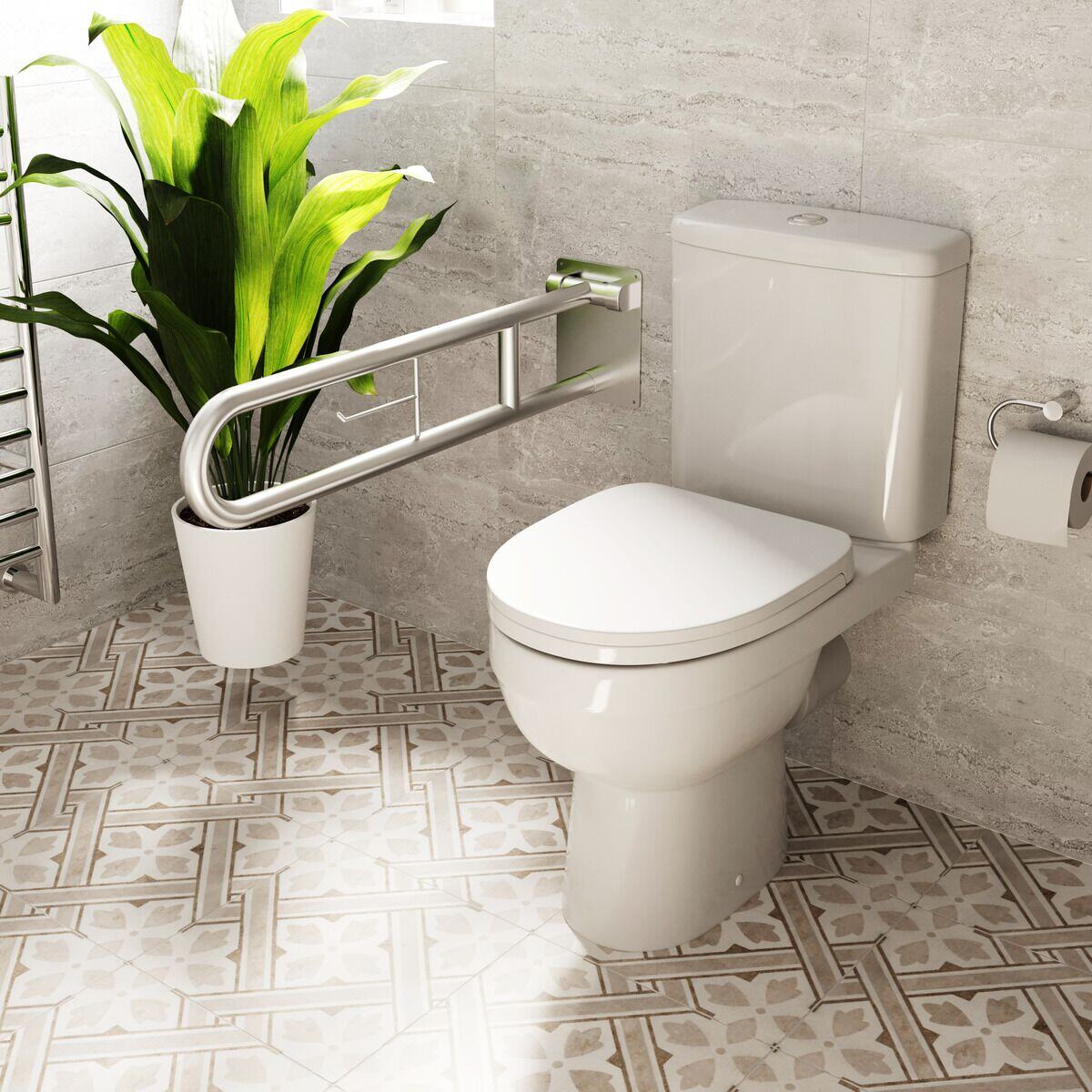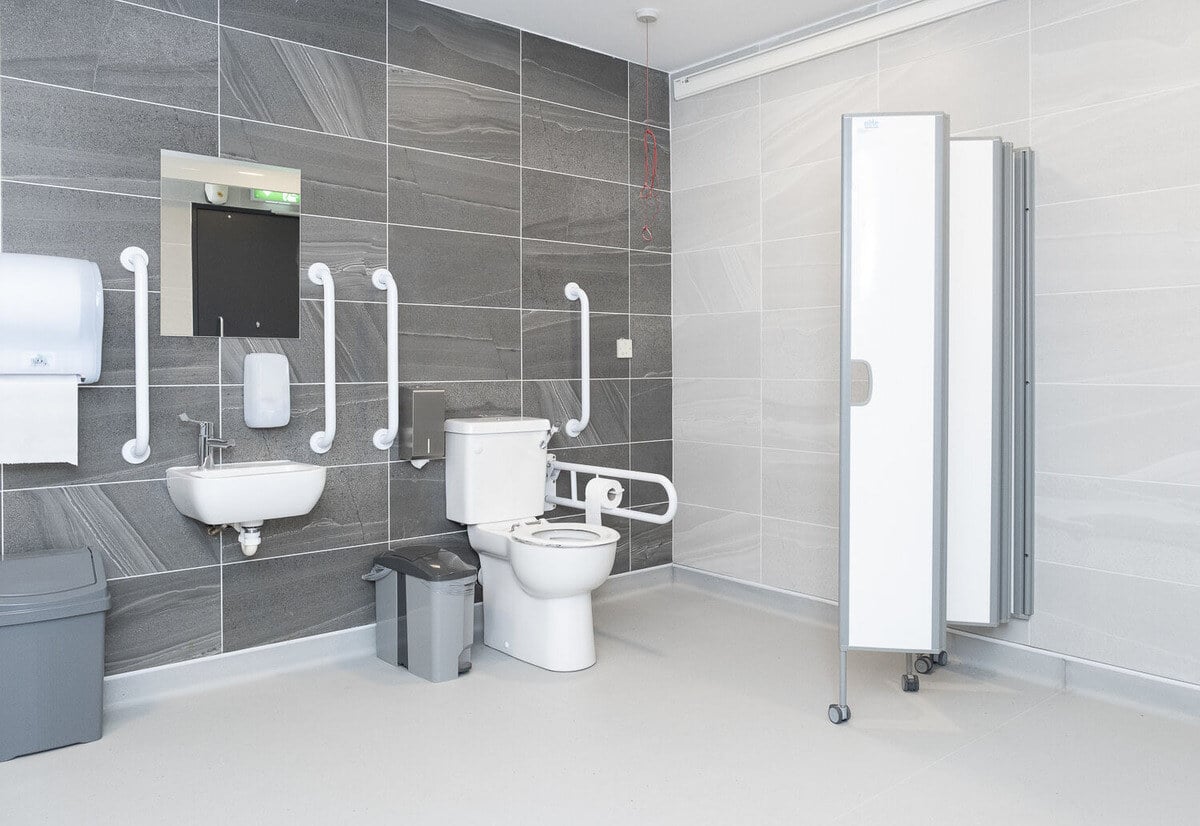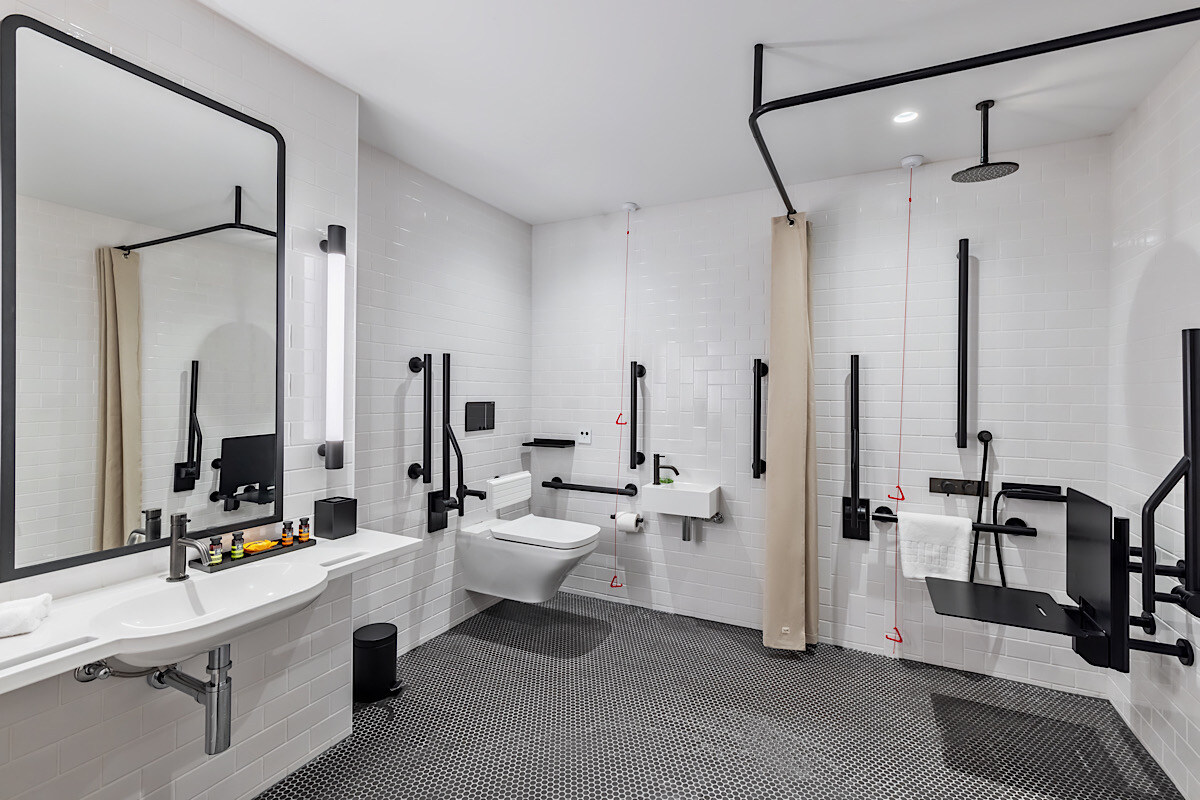Thankfully, disability advocates have worked tirelessly to change this. The message is getting through - the disabled community is large, diverse, and not willing to settle for inadequate facilities. They are discerning patrons with significant spending power, demanding better.
Of course, accessible washrooms must comply with Document M of the UK Building Regulations, which sets strict guidelines for equipment and basic dimensions. But today, architects, designers, and venue owners are going beyond mere compliance. They're pushing the boundaries of inclusive bathroom design to ensure every part of their venue, including the accessible washrooms, exudes the same carefully planned aesthetics.
Essential Elements of a Luxury Accessible Washroom
From sanitaryware to luxury grab rails and finishing touches, here's Fitzroy of London’s guide to creating inclusive loos with the ‘wow factor.’

Stylish Sanitary Ware
Toilets
- The toilet is the centrepiece of a disabled washroom and must adhere to stringent guidelines for size and positioning.
- It should be raised to a minimum of 440mm, typically around 450mm, with extra projection from the wall to allow wheelchair users to transfer laterally.
- Right-hand transfers are most common, meaning the user positions their chair on the toilet’s left side and transfers to the right.
- External signage should indicate which transfer side is provided, and if multiple accessible toilets are available, offer both right- and left-handed options.
- The toilet flush should be reachable from the wheelchair side for ease of use after transferring.

Basins
- Usually, the toilet is placed in a corner, with a basin installed on a perpendicular wall for easy reach while seated.
- The tap should be on the same side as the toilet to avoid the user having to stretch.
- In luxury washrooms, a separate vanity area is desirable, but a small hand basin next to the toilet is essential for accessibility.
- If space permits, provide a lowered vanity area with appropriate mirrors and grab rails for both wheelchair and ambulant users.
- The vanity should have a plinth with space underneath for wheelchair access.

Rails & Supports
Back Supports
- Back-to-wall or wall-hung toilet pans are popular in luxury washrooms for their sleek look, but they often need additional support.
- A back support installed behind the toilet can provide the necessary support for users to lean back comfortably.
- Padded profiles are common for comfort, with options like polyurethane faux leather or stylish ergonomic wooden designs.
Grab Rails
- Accessible toilets must have five 600mm grab rails plus a ‘lift and lock’ rail, positioned strategically:
- Horizontally beside the toilet on the non-transfer side
- Vertically behind the toilet
- Vertically on either side of the basin/mirror
- On the door
- Lift and lock rail on the transfer side
- For luxury washrooms, consider upgrading to premium finishes like gold or brass for an elevated look.
- Ensure contrast for visually impaired users by choosing rail colors that stand out against the walls.
- Opt for sleek designs for the lift and lock rail to avoid a clinical look.
- Removable rails with blanking plates can adapt ensuite facilities to meet individual needs.
- Switching out standard white or coloured rails for a premium finish like gold or brass is a simple and highly effective way to elevate the space.
Bathing and Showering
- In hotels, accessible facilities include showering or bathing areas in ensuites and spas, following Doc M requirements. This includes a shower curtain track (preferable to roll-in cubicles), fixed and drop-down grab rails, and shower seats.
- Premium finishes enhance aesthetics, and removable rails offer adaptability.
- Our premium shower seats, like those with Iroko wood, provide a luxurious, non-slip alternative to clinical-looking options.

Finishing Touches
- Ensuring a luxurious look involves integrating taps, hooks, tissue dispensers, and other items into the overall design.
- Many manufacturers now offer sensor-operated touchless taps, which are both accessible and hygienic.
- Fitzroy of London products come in over 50 finishes, allowing for a seamless match with your chosen hardware.
- Additional accessories like soap dispensers, shelves, robe hooks, and hand dryers with bespoke finishes further enhance the space.
- Achieving a deluxe finish in an accessible washroom requires two things:
- Understanding both the regulatory requirements and practical needs of disabled users.
- Partnering with a provider that offers the products and expertise to support your vision without compromising accessibility.



